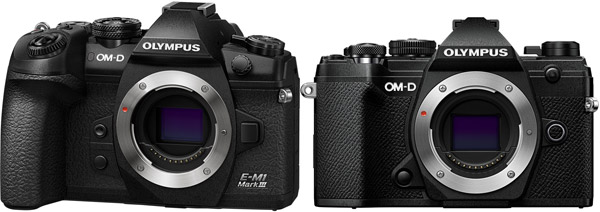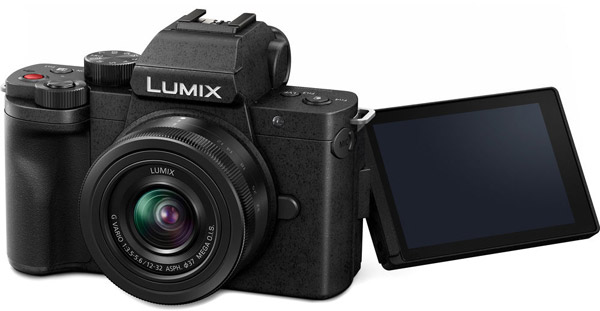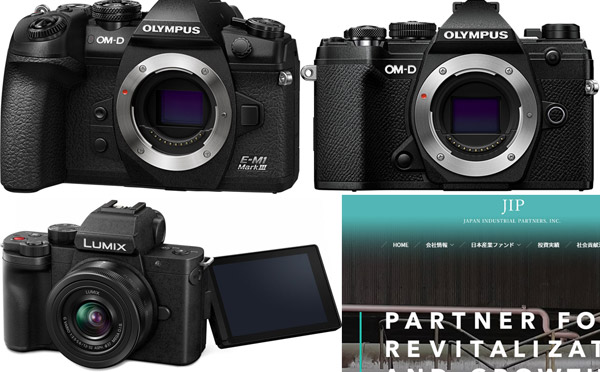I haven’t used micro 4/3rds cameras besides handling them for a short amount of time. Take that into consideration with my opinion here. Obviously, there are a huge amount of quality tools available for a lot of different use cases in this system.
That said, this is not a good year for micro four thirds.
Olympus announced that they will have their imaging division “carved out” by a private equity firm called JIP (Japan Industrial Partners, Inc). It will happen around September 2020.

JIP is difficult to find information on, but they took over Sony VAIO computers. We can see how that went. They appear to still exist, but certainly not at the level VAIO computers were. Moving forward, I don’t have high hopes for Olympus cameras and lenses under JIP ownership. It reminds me a little bit of what happened with Pentax when they were bought by Hoya and eventually Ricoh, but probably will turn out worse. At the very least Hoya was a glass/filter maker and Ricoh made the GR cameras.
The big disappointment is that Olympus was the m4/3 camera maker that started using on-sensor phase detect, which allowed for functional consistent autofocus in video mode. Panasonic stubornly sticks to their contrast based DFD technology, which I’ll talk a bit about later. Olympus has also been the gold standard of image stabilization technology with their combination of optical, sensor, and digital.

Olympus is making smart moves toward the end, but I don’t think they can compete on price. The Olympus OM-D E-M5 Mark III is currently around $1000 for just the body. The much more technically competitive E-M1 Mark III is around $1600 for the body. Given other options in the market, they both feel like a tough sell unless you are already in the system. Honestly, I’d love to have a pair of E-M1 Mark III bodies with a few lenses if they eventually drop a huge amount in price. Even the E-M1 Mark II looks good. That series of camera is close to a complete package for hybrid photo and video work if you can get along with the 2x crop sensor.
When the E-M1 Mark II camera received a firmware update to improve its video focusing capability, I started seriously looking into that format to see if it would be a solid system to transition to. Having good video IBIS is something I could benefit from.
From my understanding you need an Olympus PRO stabilized lens to fully benefit from their Sync IS feature. It’s a class leading technology and they only have a few PRO IS lenses. Panasonic’s lenses with IS won’t work in combined IS mode as far as I know, which adds confusion to the overall m4/3rds system.
Imagine a stabilized 20mm FF equivalent prime lens with smooth video AF… that would be amazing on the latest Olympus cameras. Yet Olympus and Panasonic seemed focused on making 12-XXmm zoom lenses by the truckload. I don’t get it. Do something more unique or at least have the zooms start at 10mm.
Often I want lenses that are wider than 24mm equivalent, but in m4/3rds the focal length of 12mm (x2 crop) seems to be the standard starting point. A lot of the more interesting stuff was on the Panasonic side for that, but then there are little compatibility issues between companies even though the mount itself is a standard. Don’t expect a Panasonic stabilized lens to work in Sync IS mode on an Olympus body.
Anyways, it’s disappointing but the market is contracting and Olympus couldn’t keep up. Maybe JIP will do something smart with the company.
Panasonic say they haven’t abandoned micro four thirds, but we will see how things shape up in the future. Their current focus is the L-mount. While I expect the GH series of cameras to persist for a GH-6 and the G for a G10, we will see what happens after that.
The main reason I decided to write this article is to talk about the recently announced Panasonic G100 (G110). At least in my opinion, the design is off the mark by a long shot. I don’t see a user for this camera besides people already in the system. Even then I don’t think they would be wise to get it over options like the G85.

I’ve been using a pair of Canon EOS M50 cameras for a combination of photo and video work. This camera came out in 2018. The M50 already had limitations upon release as well, but it has a few features that make it functional and simple to use. The most obvious feature is accurate and consistent video autofocus in 1080p mode…
In a closed system, the Panasonic G100 is probably a decent enough camera to produce work with. Sure, you will have to work within its quirks, but that’s the same for any camera. In the real world, I have an issue with the combination of features considering other options out there like the Sony ZV-1, Sony A6100, Canon EOS M50, or Fujifilm X-A7.
Let’s highlight some of the feature of the G100:
- It has some type of Nokia technology for tracking audio. That’s interesting, but from the DPReview video I saw it didn’t sound that great. However, Gordon’s video gives it a better showing some of the time.
- The mechanical shutter tops out at 1/500th. Okay if it’s a vlogging camera. Not okay for photos.
- It has a viewfinder, which would suggest photography, but you get an electronic shutter over 1/500th. The flash sync speed is something like 1/40th… huh?
- No IBIS and their electronic stabilization has a mixture of crops, especially to 4k mode.
- The video autofocus is inconsistent. Backgrounds have a visible pulsing due to the contrast based AF. No amount of firmware updates can solve the pulsing background look.
- It has an 8-bit log video recording format, but is near pointless in this specific camera.
- The video modes have time caps between 10 and 30 minutes. 4K with a 10 minute per clip limit makes it inconvenient to use.
- The battery is understandably small.
- It has a microphone port. Good.
- It has a fully articulating screen. Good.
- It has a large video record button. Good.
- It has clean 1080p hdmi apparently. Good.
Why bother with an EVF in a camera meant to be small and focused on solo videography? It adds to the cost of the camera. It makes the camera larger. …why? Seriously, price with a camera like this matters a lot and they put an EVF in it.
Panasonic’s DFD autofocus system isn’t technically capable of competing with an on-sensor phase detect system. Why release a camera focused on a use case that you can’t compete in? Panasonic needs to get that technology from Olympus by any means possible if they want to be in the vlogging and solo videography market. I stopped fighting camera video autofocus back when I bought a Canon Rebel SL2. I would not go back to my days of trying to pre-focus with older Pentax and Nikon DSLRs. This is a necessary feature in this type of camera now. It’s not an option if you want to be competitive, or more importantly give users a good experience.
I can’t think of a vlogger, photographer, or solo videographer I’d suggest this camera to. It has so many limitations and can’t compete with other options out there. Even as the price drops, I’d have a hard time seeing it being an option I’d suggest because of inherent limitations like DFD AF. Sure, you can make it work. With a little flexibility you can use nearly anything effectively. That’s not the problem here. It feels like a bait and switch to people wanting to get into vlogging that don’t know any better. These are the same type of people that will have a difficult time using manual focus to film themselves. It’s going to sour their interest in dedicated cameras, or at least Panasonic and m4/3rds ones…
With Panasonic making an odd misstep and Olympus being sold off, I’m not seeing the micro four thirds system in great condition. It’s disappointing to see given how they basically created the mirrorless camera.
My suggestions for a basic vlogging camera would be the Sony ZV-1, Canon EOS M50, Canon EOS M6 Mark II, Sony Alpha A6100, or the Fujifilm X-A7 depending one you personal needs.

